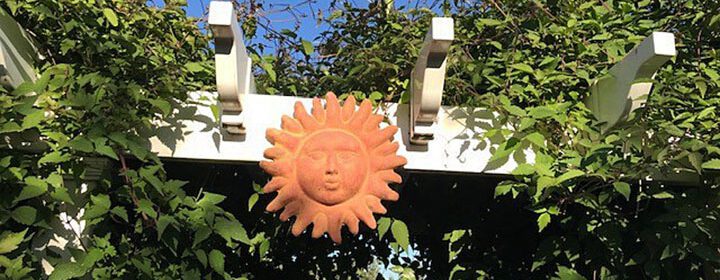Sept. 6 Column: Garden Season Review

I can’t believe we’re nearly a week into September already! How did that happen? Even though our growing season isn’t over yet, I’ve been thinking a lot about this year’s garden. I felt it would be a good time to conduct a garden season review. Here’s a link to my column in The Spokesman-Review: Keeping track of the year’s ups and downs can improve next year’s harvest. (you can also read the text of my column underneath the video below)
I don’t know about you, but I think we all deserve a do-over for 2020. It’s fitting that I chose a tomato photo for today’s post. Why? tomatoes played a prominent role in this year’s season — but more on that later…
I will create a “report card” for this year’s garden soon so you can see how each crop variety performed. Look for it under the “Guides” menu; I’ll name it “Vegetable Report Card – 2020.” It’s always helpful to take a critical look at what you grew. That way, you can make good choices for the next year.
I know I’m not alone in having a lot of green tomatoes this year. Fortunately, my pruning routine has gotten through to them so they are starting to turn color. I hope yours are, too! In the Inland Northwest, this has been a common problem for gardeners. But I’ve also heard from folks all over the country and they are experiencing the same problem. Just keep pruning back the plants, cut back (or turn off) the water to the beds. This this applies to folks whose season will be ending soon. You should start seeing some ripening going on.
In this week’s “Everyone Can Grow a Garden” video, I take you on a virtual tour of my vegetable garden. I include a lot of information on how and when to harvest certain vegetables. I hope you’ll find it helpful. Many new gardeners have been contacting me, asking how they’ll know when to pick something. I tried to cover that as I went from bed to bed.
Garden Season Review column:
by Susan Mulvihill
I know it’s not the end of the garden season yet. But with fall fast approaching, I’ve been taking a critical look at how this year’s garden performed.
Gardeners all over the country have seen the impact our changeable weather patterns have had on our plants. There’s nothing we can do about the weather itself. However, it’s a good idea to think about what we might do differently next year.
Our very wet, cool spring impacted the production of many warm-season crops. My tomato plants are still being very stubborn about ripening all of their green tomatoes. I’ve been engaging in my annual three-step pruning routine in order to encourage them. This consists of severe pruning and cutting back the amount of water they get.
In the spring, I learned that wilting seedlings can mean they are too wet rather than too dry. All of our rainstorms really set back our melon and tomato plants.
Next year, I’m considering for next year is reducing the amount of plastic sheet mulch I use on certain beds. I’ve been using it for warm-season crops such as melons, winter squash, tomatoes and eggplants. The mulch increases the temperature of the soil and the amount of light reflected up into the plants. That in turn increases productivity. But I’ve been wanting to see if it makes enough of a difference to warrant using it every year.
This year, we grew our onions from small bulbs (sets) instead of plant starts. Many readers have told me their onion plant starts didn’t grow well. In some cases, they were infiltrated by onion maggots. (ugh) I located an online source for onion sets this spring. The plants grew better than they have in the past few years.
One of the fun things we tried was growing winter squash up and over an arbor made from cattle panels. At planting time, I envisioned needing a hard hat during the summer! That’s because there would be so many squash hanging from the top of the arch. Even though the plants grew well, the arbor got more morning shade than I’d like, which impacted the plants’ productivity. Next year, we’ll move the arbor to a much sunnier location.
Our best idea was growing potatoes and a few tomato plants in cloth grow bags and large pots. All of them did beautifully. This helped us expand the footprint of our garden without having to make more raised beds. You might consider this for 2021.
I was disappointed in a new broccoli cultivar called Millennium. After I harvested the primary heads, they didn’t form secondary heads which is unusual. Next year, I’ll go back to Early Dividend which is an excellent producer.
What’s my big goal for 2021? Do a better job of succession planting. This requires planning ahead to anticipate when a crop will be finished. That way, you can quickly replace it with a new planting. As always, my goal is to get the maximum yield from our garden.
Writing in our garden journals is the best activity we can all be doing right now. I use a three-year journal which helps me make comparisons between each growing season. For example, the last spring frost dates and first fall frost each year. And knowing when we began harvesting each crop. By being able to look back and spot patterns, I will become a better gardener.

